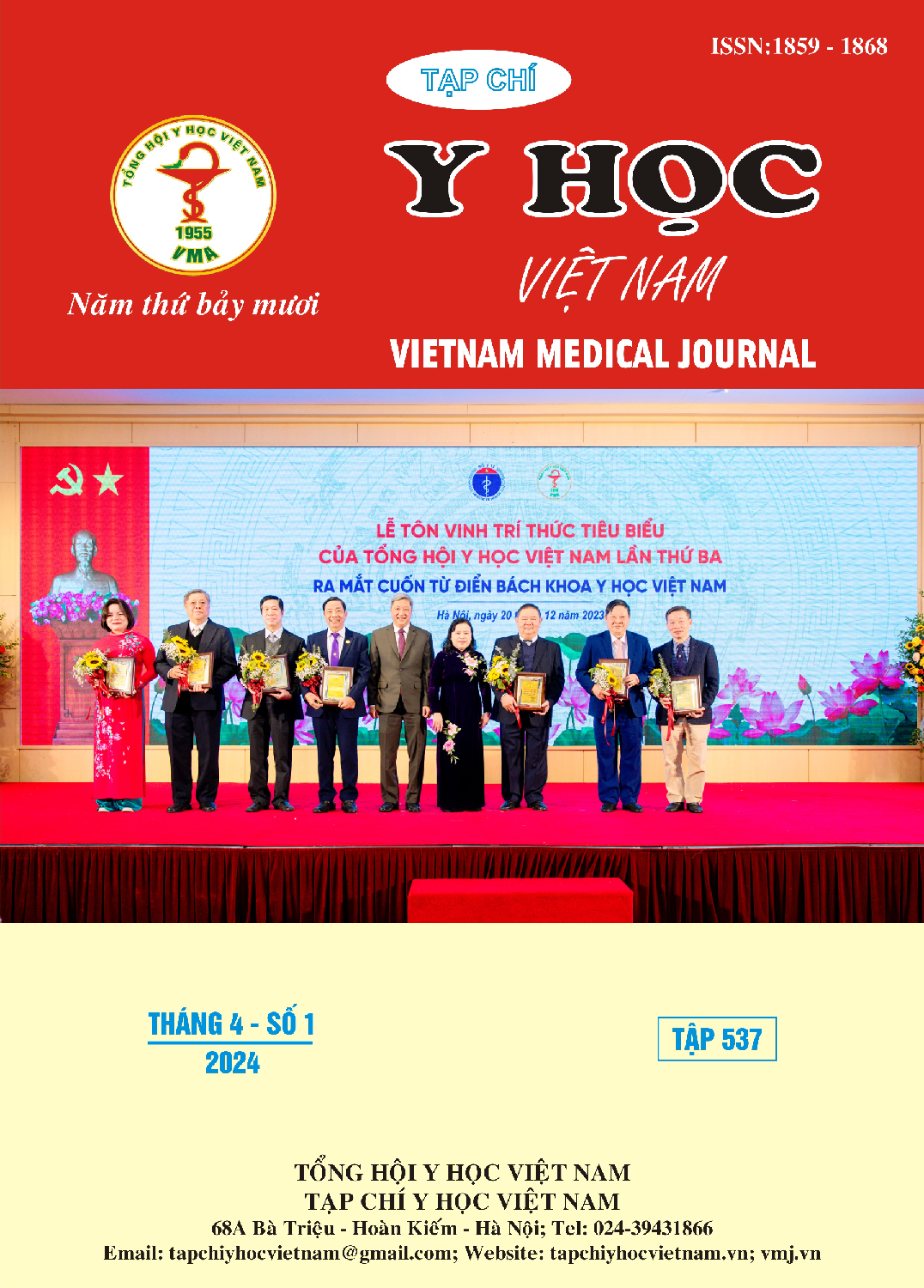EVALUATING THE EFFECTIVENESS OF VENOUS - ARTERIAL EXTRACORPOREAL MEMBRANE OXYGENATION (VA ECMO) IN THE TREATMENT OF CARDIAC SHOCK DUE TO MYOCARDITIS IN CHILDREN
Main Article Content
Abstract
Object: To evaluate VA ECMO's effectiveness in treating decompensated myocarditis in children. Methods: Retrospective descriptive study of a series of cases including 40 pediatric patients aged from 1 month to 16 years old diagnosed with cardiac shock due to acute myocarditis, treated with VA ECMO at the Pediatric Intensive Care Unit - Vietnam National Children's Hospital during the period from January 1, 2016, to September 30, 2021. Results: Patients with cardiac shock due to acute myocarditis had a median age of 8, in which boys are more likely to suffer than girls. The survival rate of acute myocarditis patients receiving ECMO support is 65%. ECMO has effectively contributed to maintaining stable blood pressure, reducing the following indicators: heart rate, Vasoactive Inotropic Sore (VIS), serum lactate concentration, NTPro-BNP, Troponin I, and improving LVEF. The complication rate encountered during ECMO support is 37.5%, and the most common is bleeding (15%). Conclusions: The survival rate of patients with cardiac shock due to acute myocarditis treated with VA ECMO is 65%. ECMO is remarkably effective in improving patients' clinical condition and laboratory results with acute myocarditis. The complication rate is 37.5%; the most common one is bleeding.
Article Details
Keywords
VA ECMO, acute myocarditis.
References
2. L. P. Caforio et al., “Current state of knowledge on etiology, diagnosis, management, and therapy of myocarditis: a position statement of the European Society of Cardiology Working Group on Myocardial and Pericardial Diseases,” Eur Heart J, vol. 34, no. 33, pp. 2636–2648, 2648a–2648d, Sep. 2013, doi: 10.1093/eurheartj/eht210.
3. K.-H. Hsu et al., “Extracorporeal membranous oxygenation support for acute fulminant myocarditis: analysis of a single center’s experience,” Eur J Cardiothorac Surg, vol. 40, no. 3, pp. 682–688, Sep. 2011, doi: 10.1016/ j.ejcts. 2010.12.050.
4. T. Nakamura et al., “Prognosis of patients with fulminant myocarditis managed by peripheral venoarterial extracorporeal membranous oxygenation support: a retrospective single-center study,” J Intensive Care, vol. 3, no. 1, p. 5, 2015, doi: 10.1186/s40560-014-0069-9.
5. V. H. Thourani et al., “Venoarterial extracorporeal membrane oxygenation (VA-ECMO) in pediatric cardiac support,” Ann Thorac Surg, vol. 82, no. 1, pp. 138–144; discussion 144-145, Jul. 2006, doi: 10. 1016/ j.athoracsur. 2006.02.011.
6. Bùi Văn Cường, Lê Thị Việt Hoa, Đào Xuân Cơ (2020). “Đánh giá hiệu quả lâm sàng ở bệnh nhân sốc tim do viêm cơ tim cấp được hỗ trợ oxy qua màng ngoàicơ thể tĩnh mạch-động mạch”. Tạp chí y dược lâm sàng 108. Tập 15 - Số 7/2020. 42-47.
7. Sawamura et al., “Early Prediction Model for Successful Bridge to Recovery in Patients With Fulminant Myocarditis Supported With Percutaneous Venoarterial Extracorporeal Membrane Oxygenation - Insights From the CHANGE PUMP Study,” Circ J, vol. 82, no. 3, pp. 699–707, Feb. 2018, doi: 10.1253/circj.CJ-17-0549.
8. E. Y. Lee, H. L. Lee, H. T. Kim, H. D. Lee, and J. A. Park, “Clinical features and short-term outcomes of pediatric acute fulminant myocarditis in a single center,” Korean J Pediatr, vol. 57, no. 11, pp. 489–495, Nov. 2014, doi: 10.3345/ kjp.2014.57.11.489.
9. S. A. Teele, C. K. Allan, P. C. Laussen, J. W. Newburger, K. Gauvreau, and R. R. Thiagarajan, “Management and outcomes in pediatric patients presenting with acute fulminant myocarditis,” J Pediatr, vol. 158, no. 4, pp. 638-643.e1, Apr. 2011, doi: 10. 1016/ j.jpeds. 2010.10.015.


